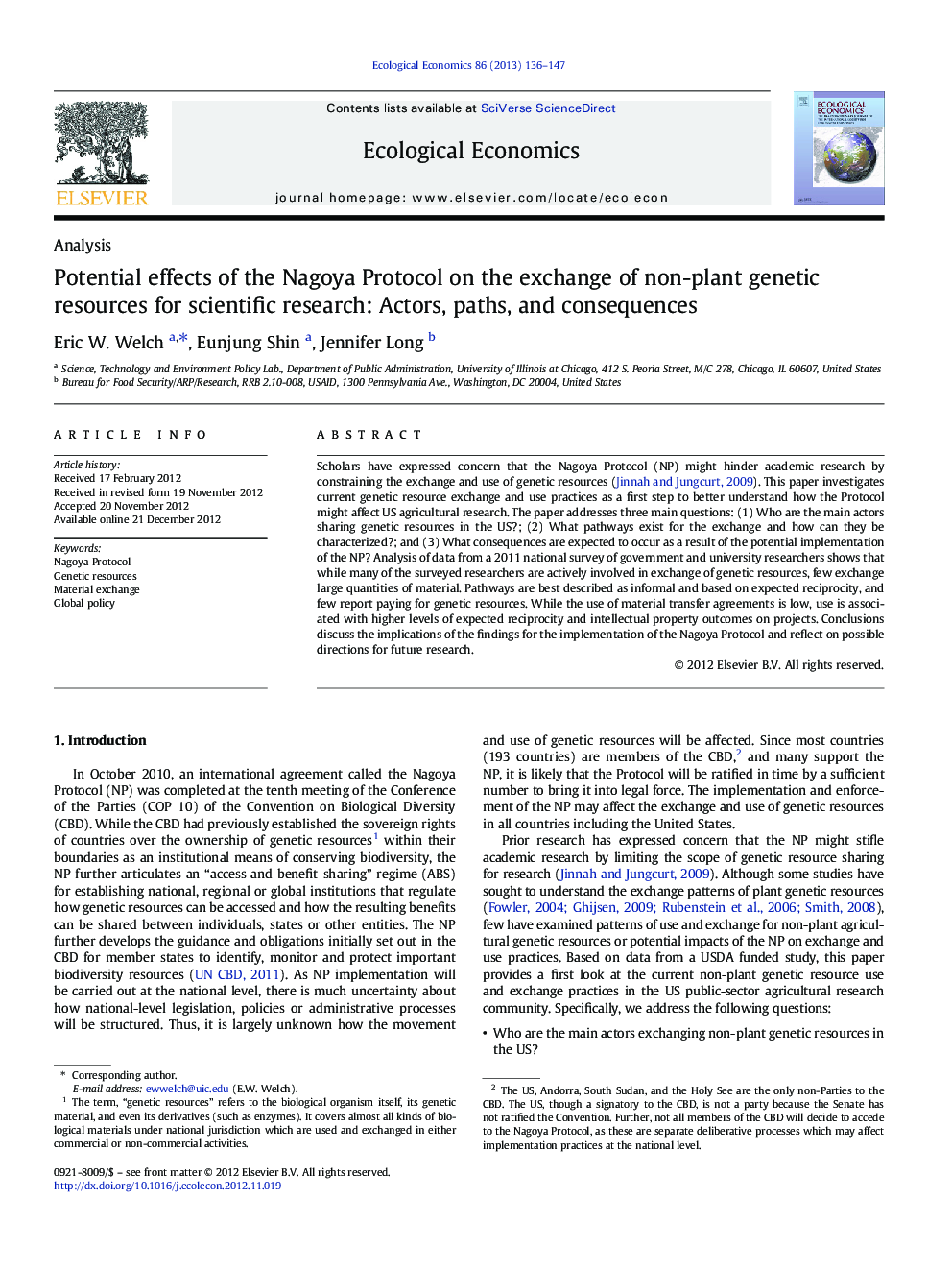| Article ID | Journal | Published Year | Pages | File Type |
|---|---|---|---|---|
| 5050125 | Ecological Economics | 2013 | 12 Pages |
Scholars have expressed concern that the Nagoya Protocol (NP) might hinder academic research by constraining the exchange and use of genetic resources (Jinnah and Jungcurt, 2009). This paper investigates current genetic resource exchange and use practices as a first step to better understand how the Protocol might affect US agricultural research. The paper addresses three main questions: (1) Who are the main actors sharing genetic resources in the US?; (2) What pathways exist for the exchange and how can they be characterized?; and (3) What consequences are expected to occur as a result of the potential implementation of the NP? Analysis of data from a 2011 national survey of government and university researchers shows that while many of the surveyed researchers are actively involved in exchange of genetic resources, few exchange large quantities of material. Pathways are best described as informal and based on expected reciprocity, and few report paying for genetic resources. While the use of material transfer agreements is low, use is associated with higher levels of expected reciprocity and intellectual property outcomes on projects. Conclusions discuss the implications of the findings for the implementation of the Nagoya Protocol and reflect on possible directions for future research.
⺠Results from a study on exchange and use of genetic resource among academic and university agricultural researchers in the United States. ⺠Investigates the role of biophysical characteristics, community attributes, stakeholder relationships, and rules in use on access to and benefit sharing. ⺠Examines differences across types of organisms including aquatics, microbiological organisms, livestock and insects.
